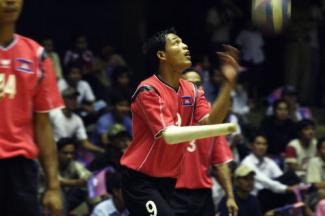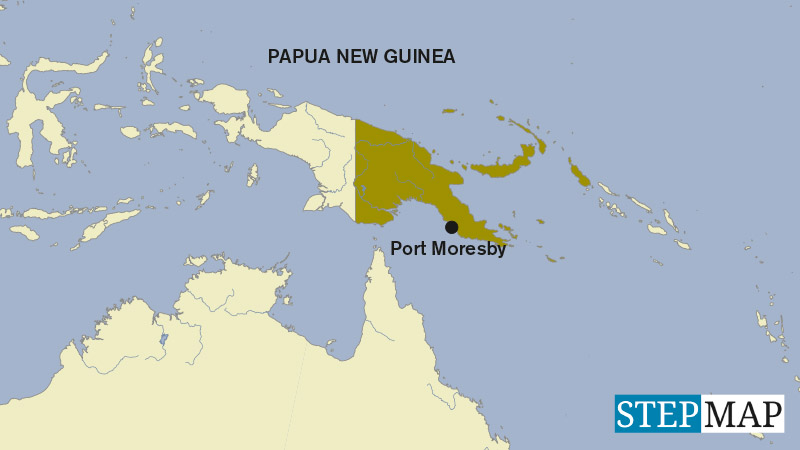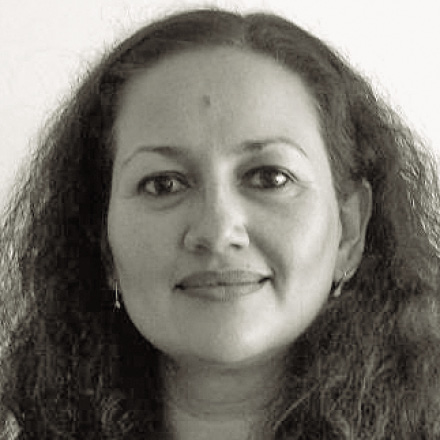Minorities
The power of sports

You are an Australian and have been living in Cambodia for 20 years. What brought you there, and why did you establish a sports programme for people with a disability?
I arrived in Cambodia in 1996 as an Australian government volunteer with a broad mandate to:
- raise awareness of landmines and disability issues and
- support the inclusion of Cambodians with a disability in mainstream society.
I chose sport as the vehicle for this rehabilitative process. I recognised the power of sports to rebuild an individual’s health, self esteem and self confidence, thus giving that individual an opportunity to move forward in life. I focused on teams sports which foster team work and community spirit. Men’s volleyball was the first sport we started, followed by men and women wheelchair racing, track and field, and a recent programme focusing on the development of a women’s wheelchair basketball programme.
Back in 1996, Cambodia was still fighting the Khmer Rouge, and the country was in political turmoil. Was there any sports programme for disabled people, any organisation, any support whatsoever?
No, there wasn’t any disability sporting option when I arrived. We kick-started the programme with volleyball which was the de facto national sport. It was played by all. It was also a very cost effective option. All one needs is a ball and a net. My main focus was on the rehabilitation of landmine survivors, the majority of whom were amputees. Volleyball is a perfect sport for amputees. I started the programme according to international sporting guidelines and benchmarks. On this base, I created the National Paralympics Committee of Cambodia which is now a well established organisation that cooperates with international bodies to develop Cambodian disability sports.
Is there an above-average number of disabled people in Cambodia, and if so, why?
As a share of the population, Cambodia has one of the highest rates of disabled persons. This is one of the many tragic legacies of the Khmer Rouge’s reign of terror and horror in the 1970s. The main causes of disability are landmines and polio.
How does participation in a sports programme help to include disabled persons into society and to raise their self esteem?
Sport has a unique ability to foster positive change for persons with a disability. It improves an individual’s health and physical wellbeing – often also assisting the physical rehabilitation process. One result is a vastly improved positive outlook on life. Playing sport on a competitive basis, nationally or even internationally, is a way to showcase the abilities of disabled people to the broader community. In Cambodia, the whole nation followed the national disabled volleyball team’s efforts in a series of volleyball world cups. Moreover, team sports allow athletes to build a support network.
One kind of volleyball for the disabled is “standing” volleyball. The players are allowed to use prostheses, although some prefer not to. “Sitting” volleyball is for people in wheelchairs. You introduced standing volleyball for men, and soon there was a very successful national team.
Yes, we managed to establish a national league of 13 teams and hold annual competitions. Athletes from this league were chosen to represent Cambodia at the world cups. As early as 1999, this team won a silver medal at the ASEAN Para Games in Thailand. In 2001, Cambodia won the gold medal at the Asian Games in Busan in South Korea. In 2003, the team participated in the world cup in Greece and won fifth place. It won fourth place in Slovakia in 2005. In 2007, 2009 and 2011, Cambodia hosted the standing volleyball world cup. The team’s biggest success was when it came in second after Germany in 2011. The world cup was broadcast live on all Cambodian TV stations. Some 96 % of the people watched. It was a wonderful opportunity to promote the abilities of Cambodian disabled persons. The athletes were given an audience by the prime minister after their success in 2011.
Were there any setbacks?
Well, establishing the programme was not easy in a nation devastated by war, and the early years were hard. But over time, we really achieved great success. Sadly, there was one major setback. The International Paralympics Committee (IPC) has become biased towards the needs of the developed nations and is now catering for expensive sports such as rowing and equestrian sport. That’s where the money is. The IPC is failing to take into account the needs of developing nations. It should encourage the development of cost-effective sports such as standing volleyball. The IPC made a tragic mistake in removing standing volleyball from the Paralympic games after Sydney 2000. As a result, the Cambodian programme was discontinued, and the focus shifted to wheelchair-based sports.
What new programmes did CNVLD establish, and what role does sports for disabled people play in Cambodia today?
CNVLD has established two more very successful programmes: wheelchair racing and wheelchair basketball. They are now integrated into in the government’s physical rehabilitation centres in the provinces of Kampong Speu and Battambang. The wheelchair basketball programme includes a programme for women. Disability sports is now well recognised in all sectors of Cambodian society. Last year, the National Paralympic Committee of Cambodia sent a team of athletes to the ASEAN Para Games in Singapore with considerable success, including a number of gold and silver medals won in the wheelchair racing events.
How was the work of CNVLD financed?
We got support from a variety of donors over many years, including the Australian and German governments, who not only helped with money, but also provided expert coaches. They came to Cambodia on short term tenures to train coaches and athletes according to international standards. Other donors were NGO’s such as the International Red Cross and Australian Red Cross as well as private donors and corporate sector donors. CNVLD is very proud that 80 % of all funds were used to directly assist the athletes. Only 20 % was allocated to administration. I worked on a volunteer-level salary myself all the time. Funding is still a significant challenge, however, and there is an enormous need to build proper sporting facilities in Cambodia. For example, swimming is one of the best rehabilitative sports for persons with a disability, but there are little to no public swimming pools in Cambodia.
What are your plans for the future?
After 20 years, I am rather exhausted but also very proud of the achievements. CNVLD is now being closed and its programmes will be handed over to the National Paralympic Committee and the Ministry of Social Affairs, Veterans and Youth Rehabilitation. These organisations are capable of managing and developing the projects. They are being run by Cambodians for Cambodians – this is the greatest success of CNVLD. I will however stay in touch with CNVLD athletes and provide advice where and when possible. They are truly inspiring people to work with. I will remain in Cambodia and focus more on my musical roots through my work with the Phnom Penh based band “Krom” who has recently signed a contract with a major US label.
Christopher Minko is the founder of the NGO Cambodian National Volleyball League (Disabled), CNVLD.
chrisminkoj@gmail.com












